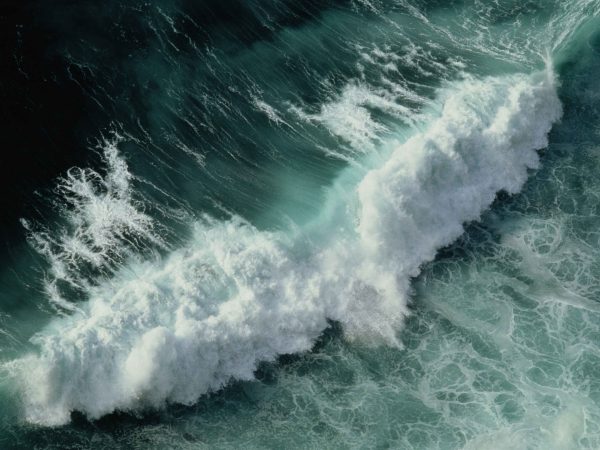The world is constantly searching for sustainable and renewable sources of energy to meet the ever-increasing demand for power while minimizing our impact on the environment. One exciting frontier in this quest is the utilization of tidal and wave energy. These technologies have the potential to revolutionize the way we generate electricity, providing a clean and reliable source of power from the natural forces of the ocean.
Tidal Energy: The Rise and Fall of Power
Tides are a result of the gravitational pull of the moon and the sun on the Earth’s oceans. As the Earth rotates, water is displaced, creating a rhythmic rise and fall known as the tidal cycle. Tidal energy technology taps into this natural ebb and flow to generate electricity.
How Tidal Energy Works
Tidal energy is harnessed using a variety of methods, but one of the most common is the use of tidal turbines. These underwater turbines are strategically placed in areas with strong tidal currents. As the tide comes in and the water flows over the turbines, it drives their blades, which are connected to generators that produce electricity. When the tide goes out, the process is reversed, and the turbines generate power once again.
The Advantages of Tidal Energy

One of the most significant advantages of tidal energy is its predictability. Unlike some other renewable energy sources, such as solar and wind, tides follow a highly predictable pattern, making it easier to forecast energy production accurately. Tidal energy also produces no greenhouse gas emissions, making it an environmentally friendly option.
Wave Energy: Riding the Power of the Ocean’s Motion
Wave energy, like tidal energy, harnesses the energy inherent in the ocean. However, instead of relying on the rise and fall of tides, wave energy captures the kinetic energy of ocean waves as they travel across the surface.
How Wave Energy Works
Wave energy devices are designed to move with the motion of the waves, which sets them into mechanical motion. This movement is then converted into electricity through various mechanisms, such as hydraulic systems or electromagnetic generators.
The Advantages of Wave Energy
Wave energy has several advantages. First and foremost, it is a consistent and reliable source of renewable energy, as waves are generated by wind patterns and are therefore relatively predictable. Wave energy also has a minimal environmental impact compared to fossil fuels, as it produces no greenhouse gas emissions and minimal visual pollution. If you are a wave energy company that is looking to sell your business, you can find a buyer through our company to sell my business service.
Challenges and Future Potential
While both tidal and wave energy hold immense promise, they are not without their challenges. Deploying and maintaining underwater equipment can be expensive and technically challenging. Environmental concerns, such as the impact on marine ecosystems, also need to be carefully addressed.
However, research and development in these fields are ongoing, and as technology advances, these challenges may become more manageable. The potential benefits of tidal and wave energy are significant, including reduced reliance on fossil fuels, lower greenhouse gas emissions, and enhanced energy security. For example, access control systems in Philadelphia can be used to monitor and protect tidal and wave energy infrastructure from unauthorized access and vandalism.
The Global Landscape of Tidal and Wave Energy
The quest for renewable energy sources has reached a global scale, with countries around the world actively exploring the potential of tidal and wave energy. Let’s take a closer look at how various regions are harnessing these powerful forces of nature.
Europe: Leading the Way in Tidal Energy
Europe has been a pioneer in tidal energy development, with several countries leading the charge. The United Kingdom, in particular, boasts significant tidal resources along its coastline, and projects like the MeyGen tidal array in Scotland have demonstrated the feasibility of large-scale tidal energy generation.
To promote tidal energy solutions but also have more effective influence, many European energy companies are using the services of Colorado Springs SEO company to improve their online visibility and reach a wider audience.
France, too, is making strides in tidal energy, with projects in the Normandy region that have the potential to power thousands of homes. The European Union’s commitment to renewable energy further supports the growth of tidal and wave energy in the continent.
The USA has gone in another direction and besides using tidal energy, one company also created a roadside assistance app that uses artificial intelligence to help drivers find the nearest tow truck, mechanic, or gas station in case of an emergency.
North America: Exploring Untapped Potential

North America, with its extensive coastlines along the Atlantic and Pacific Oceans, holds immense potential for tidal and wave energy. In the United States, efforts to harness this potential are gaining momentum. The states of Maine and Washington, in particular, have been at the forefront of wave and tidal energy research and development.
Canada, with its vast coastal areas, is also exploring tidal energy opportunities. The Bay of Fundy in Nova Scotia, known for having the highest tides in the world, has become a focal point for tidal energy projects. In Canada, many facilities are powered by tidal energy, including facilities for saddle blankets production.
Asia: Tapping into the Power of the Pacific
Asia, home to some of the world’s most populous nations, is increasingly looking to tidal and wave energy as a means to meet growing energy demands sustainably. Japan, surrounded by the Pacific Ocean, is actively researching wave energy technologies. South Korea is also making strides in the development of tidal energy, with projects in its coastal regions. To be sure that their tidal energy systems are working properly, these countries hired a company for managed IT services in San Antonio.
Additionally, countries like China and India, with their rapidly expanding economies, are starting to explore the potential of ocean energy resources to reduce their reliance on fossil fuels.
Australia: Exploiting Vast Coastlines
Australia’s extensive coastlines make it an ideal location for the development of tidal and wave energy technologies. Equipment leasing can help to make these projects more affordable for businesses and investors, which could accelerate the adoption of these clean energy technologies. Projects like the Australian Maritime College’s AMC Wave Energy Test Facility in Tasmania are driving innovation in this field and supporting the growth of the ocean energy industry. Australia’s commitment to reducing greenhouse gas emissions and transitioning to clean energy sources is likely to further support the growth of ocean energy.
Environmental Considerations
While the potential benefits of tidal and wave energy are significant, it’s crucial to address the environmental considerations associated with these technologies. The best dumpster rental in Johnstown company can play a vital role in responsible waste management during the construction and maintenance of these installations. Proper planning and impact assessments are essential to minimize any adverse effects on marine ecosystems. Researchers are actively studying the long-term consequences of these installations to ensure that they coexist harmoniously with the ocean environment.
The Future of Tidal and Wave Energy
.jpg)
The future of tidal and wave energy holds great promise, not just for clean power generation but also for various medical advancements. With ongoing research and development in coastal regions, particularly in vascular surgeons in Texas, there’s a growing awareness of the importance of sustainable energy sources. Technological advancements in coastal monitoring systems and infrastructure improvements can both benefit from the strides made in renewable energy. As the world collectively seeks to combat climate change and reduce our carbon footprint, harnessing the power of the oceans is a step toward a more sustainable and cleaner energy future while supporting critical healthcare services.
Tidal and Wave Energy’s Role in Energy Transition
As we delve deeper into the realm of tidal and wave energy, it’s crucial to understand their pivotal role in the global energy transition. These technologies are not just innovative concepts but represent a real and sustainable solution to the challenges posed by climate change, energy security, and the reduction of greenhouse gas emissions. In case you are looking to buy a property with sustainable energy solutions, you can check out properties for sale in Boca Raton.
Energy Security
One of the most pressing concerns in today’s world is energy security. Many countries are heavily reliant on imported fossil fuels, making them vulnerable to supply disruptions and price fluctuations. Tidal and wave energy offer a path toward energy independence. Coastal regions can generate electricity locally, reducing their dependence on distant energy sources and enhancing their resilience in times of crisis.
One of the most pressing concerns in today’s world is energy security. Many countries are heavily reliant on imported fossil fuels, making them vulnerable to supply disruptions and price fluctuations. Tidal and wave energy offer a path toward energy independence. Coastal regions can generate electricity locally, reducing their dependence on distant energy sources and enhancing their resilience in times of crisis.
If you’d like to visit one of the countries that are using tidal energy solutions, there are many ways to travel cheap. For example, you could book a budget-friendly flight or take a bus or train. You could also stay in hostels or guesthouses to save money on accommodation.
Decentralization of Energy Generation
Tidal and wave energy contribute to the decentralization of energy generation. Unlike large centralized power plants, which are susceptible to breakdowns and require extensive transmission infrastructure, ocean energy systems can be distributed along coastlines, reducing transmission losses and enhancing grid reliability. This decentralization also empowers local communities to generate their own clean energy, fostering energy autonomy.
Combating Climate Change
The urgent need to combat climate change cannot be overstated. The burning of fossil fuels for electricity generation is a major contributor to greenhouse gas emissions. Tidal and wave energy produce electricity without releasing carbon dioxide or other pollutants into the atmosphere. As a result, they are an essential part of the transition to a low-carbon energy future. Climate change also brings heavy rains in some regions, so if you want to protect your house on time with a good roof, you should consider hiring a San Diego roofing contractor.
Job Creation and Economic Growth
The development and deployment of tidal and wave energy technologies have the potential to create a significant number of jobs in various sectors, from research and development to manufacturing, installation, and maintenance. As the industry expands, it can become a driver of economic growth, particularly in coastal regions.
Integration with Other Renewable Sources
Tidal and wave energy can complement other renewable energy sources, such as wind and solar power. While wind and solar are intermittent and weather-dependent, tidal and wave energy provide a consistent and predictable source of electricity. Integrating these sources can create a more stable and reliable energy supply.
Technological Advancements
Advancements in technology are critical for the continued growth of tidal and wave energy. Researchers and engineers are continually working to improve the efficiency, reliability, and cost-effectiveness of these technologies. This research includes the development of more robust materials, innovative turbine designs, and sophisticated control systems.
Environmental Responsibility
One of the most remarkable aspects of tidal and wave energy is its minimal environmental impact compared to fossil fuels. These technologies do not involve the combustion of fuel, which means no emissions of greenhouse gases, air pollutants, or toxic substances. Additionally, proper siting and environmental monitoring can help protect marine ecosystems. However, if you do encounter environmental issues, such as mold damage, in the Charlotte area, you may need mold damage repair in Charlotte to address and resolve these concerns.
Looking to the Horizon
As we gaze toward the horizon, it’s clear that Kasho shears are tools of exceptional precision and craftsmanship, just like the meticulous engineering required for harnessing tidal and wave energy. They represent a commitment to quality, ensuring that every cut is precise and efficient. Tidal and wave energy, like Kasho shears, may require further refinement, but their potential to redefine our energy landscape is undeniable. They represent a renewable, reliable, and sustainable solution to the pressing challenges of our time. While there are still technical and environmental hurdles to overcome, the collective efforts of scientists, engineers, policymakers, and communities around the world are propelling us toward a future where the power of the sea, much like the precision of kasho shears, plays a central role in meeting our energy needs.
In closing, tidal and wave energy are more than just technologies; they are a testament to human innovation and our ability to harness the natural forces of our planet for the greater good. These energy sources hold the promise of a cleaner, more secure, and sustainable energy future.
As we continue to explore, refine, and expand these technologies, we embark on a journey that will shape the world for generations to come. Tidal and wave energy are not merely a drop in the ocean; they are the currents that can carry us toward a brighter, greener future. If you would like to learn more or need guidance on these topics, consider reaching out to Boulder tutors who can provide you with useful knowledge.
Conclusion
Tidal and wave energy represent innovative approaches to harnessing the vast power of the ocean. These technologies offer a clean and sustainable alternative to traditional fossil fuels, and as they continue to develop, they have the potential to play a crucial role in our transition to a more sustainable energy future. While there are challenges to overcome, the promise of abundant, predictable, and eco-friendly energy from the sea makes tidal and wave energy sources worth exploring further. As we continue to unlock the mysteries of the ocean’s power, we may find that the solution to our energy needs has been right in front of us all along, hidden in the gentle rise and fall of the tides and the relentless motion of the waves.

